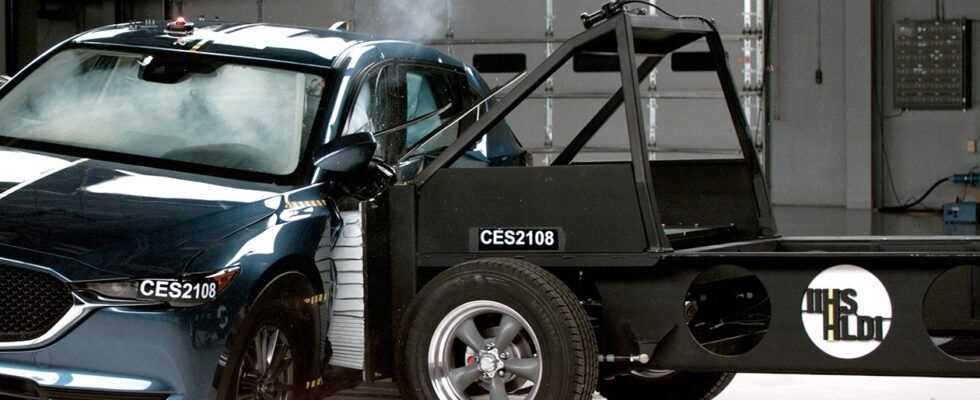Car manufacturers develop the structure of their vehicles in such a way that they meet current crash test requirements. Most of them get good grades and are therefore considered safe. But what happens if you change the crash test requirements? A well-known US safety institute has developed a more stringent side impact test – and only one of 20 SUVs tested passed it.
It is the Mazda CX-5 that has prevailed as the best in its class, as the only one with a “good” as an overall result.
The American Institute for Highway Safety (IIHS) has not significantly tightened the test arrangement to fool the manufacturers, but because side collisions were responsible for almost a quarter of road casualties in the USA in 2019.
“We reorganized the test because we believed that there was room for further development in this area, and the good result for the Mazda CX-5 confirms that better protection of the occupants is possible,” said the President of the Organization, David Harkey.
The vehicle structure of the CX-5 survived the crash very well, and the airbags protected the heads and upper bodies of the dummies used. In addition, the testers found very little penetration into the passenger compartment. This reduces the risk of injury, certified the IIHS of the model, which is getting another facelift.
Nine candidates are still satisfactory
A total of nine other models achieved the “acceptable” result. These include Audi Q3, Honda CR-V, Subaru Forester, Toyota RAV4 and the Volvo CX40. The other tested models could not or only partially meet the requirements.
Hyundai Tucson, Jeep Compass, Jeep Renegade and Kia Sportage were rated as “marginal”, which corresponds to “adequate”.
Two candidates failed with “poor” / “insufficient”: Honda HR-V and Mitsubishi Eclipse Cross.
Expectable weaknesses
“The results are not good, but we did not expect anything else after we tightened the test arrangement,” says chief engineer Becky Mueller, analyzing the results. The Mazda CX-5 achieved best to good grades in all measured parameters.
The American insurers’ safety institute has been carrying out this crash test since 2003, and the safety of vehicle occupants has improved significantly since then. At that time, only one in five models achieved a good grade. According to a scientific study, the chances of surviving a severe side impact have now improved by 70 percent.
This is how the vehicles are checked:
In order to simulate these accidents even better, the institute has significantly tightened the test. The vehicles now have to withstand contact with a 1.9-ton sled that hits the side at a speed of around 60 km / h. So far, a sled weighing 1.5 tons was sent on the crash course at around 50 km / h. The result is an 82 percent increase in impact energy. Thanks to its honeycomb structure, the new barrier behaves more like a real SUV or a pick-up in the event of an impact.
With the new test method, American insurers are responding to the increase in these models on the streets. SUVs and pickups have a share of around 80 percent in the USA. In the European NCAP test, a deformable barrier weighing 1,300 kilograms hits the side of the test vehicle at 50 km / h. (aum)
